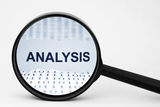EXPERT ANALYSIS
SECTION ONE
SECTION TWO
Does CPG Lack Resources to Capitalize
On Trade Promotion?
More Consumer packaged goods (CPG) companies have invested heavily in
technology platforms to improve their trade promotion performance, but many
lack the talent or business processes to capitalize on these investments, says a
new study from Accenture. According to the Perfect Promotion Study, 61% believe their technology investments have produced a wealth of data that can help improve their trade promotion performance, but they lack the talent needed to put the data to its most effective use and boost the return on their analytics investments.
Slightly more than half - 53% - believe their company’s trade promotion performance is good, but could be improved. However, 28% believe it to be either “totally ineffective” or in need of significant improvement, and only 19% view their trade promotion performance as industry leading.
KEY QUESTIONS:
Based on your experience, do you agree with the findings of the study? What needs to be done for CPG to benefit more from its investment in trade promotion? What will be the likely outcome if nothing is done?
EXPERT ANALYSIS:
While most companies are quick to blame their TPM tool for trade promotion inefficiencies, a TPM solution is not a silver bullet. The findings of this study appear to reflect that notion. It’s vital to have the right people and processes in place; otherwise the powerful insight and analysis that comes from TPM technology will always fall short.
Before embarking on a TPM project, companies need to invest in talent, establish the right culture and implement standardized processes. After all, a technology solution should work with your business processes and hierarchies, not against them. CPG companies should also commit to best practices and system training (and re-training) to keep the team on a path toward continuous improvement.
CPGs need to make sure they select a solution provider with industry experience with TPM experts. As we’ve learned, it’s more than software; it’s about the people and processes too. If a company selects a software solution that is not a good fit or chooses not to commit to the “people, processes then tools” mantra, the findings from the study above will continue status quo.
Lisa Whinnie, EVP, Chief Customer Officer, AFS Technologies
Leading CPGs have made great strides in evolving the talent and building the required analytical and technology capabilities to capitalize on developments in trade promotion planning and optimization. But even in the leaders, it’s a challenge to ensure these capabilities are leveraged throughout the trade marketing and sales organizations in all interactions with retail trading partners.
Going forward, these challenges are going to increase as retailers start sharing shopper/transaction data with manufacturers with the expectation that manufacturers will incorporate the shopper dimension into trade promotion planning. The leading CPGs that capitalize on these advanced analytics capabilities and Big Data assets will extend their lead in the market and continue to capture a disproportionate share of shopper spend.
Graeme McVie, Vice President and General Manager, Business Development, LoyaltyOne
With only one in five companies believing their trade promotion performance is industry leading, there is certainly a lot of room for improvement especially when you consider there is over $100 Billion spent each year on trade promotion. Many companies have invested in TPM systems, but most are very "transactional" in nature. It is a good start and brings some discipline to their processes. Companies that are most satisfied tend to be those that are able to predict the impact of not only trade promotion, but customer specific marketing, shopper marketing and other promotional vehicles. It is not easy. It takes a major commitment to tools, resources, training and a disciplined process.
Manufacturers need to use trade promotion as a strategic tool rather than a crutch to prop up sales. If companies choose not to make these investments and continue to repeat last years' promotional calendar, get lower lifts, complain about paying for the BOGO they did not really want to participate in, they risk not only wasted promotional spending, but also risk eroding baseline sales and their brand equity.
Colin Stewart, Sr. Vice President, AMG Strategic Advisors
The Accenture Perfect Promotion study reminds us that brands continue to struggle to quantify the ROI of their marketing activities. It’s ironic that promotional options are widening and data are proliferating while effective action is lagging. Intricacy is the enemy of insight.
People and processes have always been the limiting factors in trade promotion effectiveness. Why would the present era of digital channels and frequent shopper targeting be any different?
Investment in these vehicles and associated planning tools has apparently yielded a huge increase in data flows. In theory, this should enable better post hoc performance analyses and predictive planning. In practice, however, the required knowhow remains rare in the talent base. Trade promotion is not a once-in-a-while undertaking - it’s an everyday production activity that demands repeatable practices conducted by mere mortals, not analytics wizards.
So perhaps this survey reminds us that we need to be realistic about the difference between latent value and practical value of new types of trade promotion data. Better automation might help unlock more of the ROI. Better designed practices can help pare down the intricacy and bring more insights to the surface.
James Tenser, Principal, VSN Strategies
Click on the LinkedIn logo to join the new Shopper Technology Institute Discussion Group
SECTION THREE

